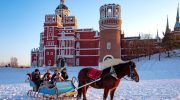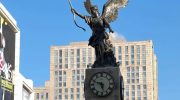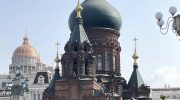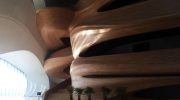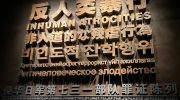Harbin Confucius Temple, located in Harbin, Heilongjiang Province, China, is the largest Confucian temple in northeastern China and one of the most well-preserved Confucian temples in the country.
Built in 1926 and completed in 1929, the temple serves as a place of worship for Confucius, the great Chinese philosopher and educator. It features traditional Chinese architecture, including red walls, golden roofs, wooden carvings, and stone inscriptions, making it an important cultural and historical site.
More ideas to travel to Harbin:
- 1-Day in Harbin: short itinerary for stayover
- 3-days in Harbin: the best itinerary for your perfect visit
- Top places to visit in Harbin: snow capital

Temple highlights
- Main Hall (Dacheng Hall, 大成殿) – The central structure of the temple, where a statue of Confucius is enshrined along with tablets honoring his disciples.
- Lingxing Gate (棂星门) – The entrance gate, named after a star associated with Confucius.
- Pavilions and Stone Inscriptions – The temple features ancient steles, tablets with Confucian teachings, and inscriptions by famous calligraphers.
- Historical Exhibitions – The temple complex includes a museum displaying relics and historical information about Confucius and Confucianism.
- Serene Courtyards and Gardens – The temple’s surroundings feature peaceful gardens, providing a quiet atmosphere for reflection and study.

Why you must visit Harbin Confucius Temple
Visiting Harbin Confucius Temple is a great experience, especially if you’re interested in Chinese culture, history, and philosophy. Here’s why you should consider adding it to your itinerary:
Cultural and historical significance
It is the largest Confucian temple in northeastern China, preserving centuries-old traditions and teachings. It offers a deeper understanding of Confucianism, which shaped Chinese ethics, education, and governance for thousands of years. The temple features well-preserved ancient architecture, stone inscriptions, and historical artifacts.

Unique traditional architecture
The temple follows classic Ming and Qing Dynasty-style architecture, with ornate carvings, red walls, and golden roof tiles.
You can explore beautifully decorated halls, serene courtyards, and elegant pavilions. The Dacheng Hall (大成殿) is a stunning example of traditional Chinese temple design.
Peaceful and relaxing atmosphere

Compared to Harbin’s busy streets and modern attractions, the temple offers a quiet retreat.
The surrounding gardens and park create a peaceful environment, perfect for meditation or reflection. It is a great spot to take a break from the winter crowds during the Harbin Ice Festival.
What else to visit in Harbin:
- Volga Manor: Russian-themed park in Harbin
- Unit 731 Museum in Harbin: back to tragic history
- The Siberian Tiger Park in Harbin – how to visit

Education and exploration
The temple has historical exhibitions explaining Confucius’ influence on Chinese society. Visitors can see old manuscripts, calligraphy works, and Confucian classics.
If you’re into philosophy, you’ll appreciate learning about Confucius’ teachings on morality, governance, and education.

Less crowded, hidden gem
Unlike Harbin’s tourist hotspots (like St. Sophia Cathedral or Ice and Snow World), the Confucius Temple is less crowded, offering a more personal experience.
You can take your time exploring, taking photos, or simply enjoying the quiet atmosphere.
Close to Other Attractions
The temple is centrally located and easy to visit along with other landmarks like St. Sophia Cathedral, Zhongyang Pedestrian Street, and Harbin Engineering University.
Perfect for a half-day cultural tour before heading to more lively attractions.

How to visit Harbin Confucius Temple
Address: No. 25 Wenmiao Street, Nangang District, Harbin, China (哈尔滨南岗区文庙街25号)
Opening Hours:
- Summer (May – October): 08:30 – 17:00
- Winter (November – April): 09:00 – 16:30

Entrance Fee:
- Adults: Around 10-20 RMB
- Students/Seniors: Discounted tickets available
- Children under 1.2m: Free
How to get there:
- By Metro: Take Line 1 to Harbin Engineering University Station, then walk or take a taxi.
- By Bus: Take buses 7, 14, 55, or 66 to the Confucius Temple (文庙站) bus stop.
- By Taxi: A taxi from central Harbin costs about 15-25 RMB.

Best time to visit:
- Spring & Summer (April – October): Best for sightseeing, as the weather is pleasant.
- Winter (November – February): If you visit during the famous Harbin Ice and Snow Festival, it’s a good cultural stop.
Estimated Visit Time:
- Around 1-2 hours

What to visit nearby
Harbin Confucius Park – Right next to the temple, great for a relaxing walk.
Harbin Institute of Technology – One of China’s top universities with a historic campus.
St. Sophia Cathedral – A famous Russian-style Orthodox church, about 15 minutes away by car.
Harbin Ice and Snow World – A must-visit attraction in winter.


